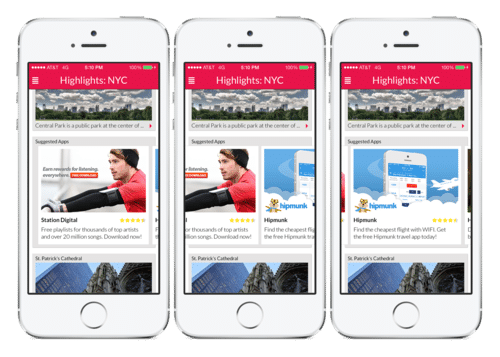Over the past decade, native advertising has gained traction among both advertisers and brands. Yet it was not until around 2014 that native advertising switched screens and made its way on to mobile devices. And while it may have taken a few years to take off, native advertising on mobile is here to stay.
In a recent study by Trusted Media Brands, marketers have officially named mobile/video native advertising as the new mobile banner ad.According to the study, 46 percent of respondents intend to move towards the use of native mobile advertising in 2016, while 45 percent plan to use native advertising through mobile video.
Why? It is fact among advertisers and brands that native ads are less intrusive, better for brand awareness, and are generally more appropriate for engagement and interaction among users.And while these positives do make a strong case, not every brand has been able to use native advertising to their advantage.
Native ads can be fickle, but with a few do’s and don’ts, they can be your brands next greatest investment.
Do pay attention to the user
It is well known that consumers are not intrinsically interested in advertisements.
This creates a problem for advertisers. How can they successful peak the interest of their target market?The answer: get to know your customer on a deeper level, create meaningful posts with rich content that attracts their interest and provides value.
Users will be more likely to read posts aligned with their interests than those who are self-serving, uninteresting and off-topic.
More importantly, if your ads are better aligned with the consumer, they have a significantly higher probability of being shared via social media, which can then open a new funnel for brand awareness beyond belief.
Do keep functionality at the forefront
The main allure to using native advertising is having the ability to blend advertorial content with the existing content – making these advertisements immune to traditional ad blockers. Yet many brands try and fail due to their lack of thought throughout the planning process.
What type of content does the Web site or mobile app offer? For example, many of the most popular web sites such as Buzzfeed thrive on “listicles” rather than the traditional article.
“11 Pieces Of Career Advice I Could Have Used In My Twenties”
“Just 27 Surprisingly Funny Tweets About Cats”
“6 Ways to Make 2016 Your Best Year Yet”
In this case, they are popular for a reason and it is in the brand’s best interest to follow a similar template and tone to be successful.
On the more specific side, when creating a native ad, it is imperative to think about the overall design of the page on which it will appear. From the color to typography, to the general ad behavior, all aspects of the ad must follow the same style.
Don’t be deceptive
While shaping the advertisement to the user is extremely important, one of the more important aspects – if not the most important – is to be honest.
One of the main downfalls of native advertising is its reputation with the public.
Many brands have taken advantage of the ability to self-promote via native ad which, in turn, has created a mistrust with users. These same companies run the risk of creating an everlasting negative relationship with the public.
The Federal Trade Commission recently issued a guide to native advertising that is intended to prevent customers from this deception.
For example, terms such as “Promoted” or “Promoted Stories,” should not be used due to their ambiguity and their ability to mislead the consumer.
As far as placement, the FTC also recommends that advertiser disclosure should appear at the forefront of the advertisement, not as a footnote.
Step away as an advertiser and think about it from a consumer standpoint. Would you find this ad self-serving, annoying, misleading? If so, it is important to re-evaluate your advertisement.
Being deceptive is unacceptable and is definitely not worth the long-term damage to your brand.
Don’t be afraid
There is a reason why native advertising has grown so significantly in popularity.
Not only is it a smart way for advertisers to reach their audience with meaningful and interesting content, it has changed the conversation between advertisers and the consumer.
If your brand can create an honest, relevant and exciting native advertisement, the opportunities to reach your ideal consumers through their phones are endless.
But advertisers and brands must not abuse that power. Because, in the end, it is still an advertisement. Consumers do – and will – have the power to say no.




